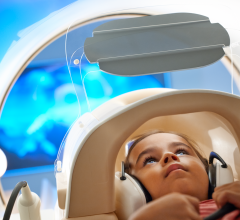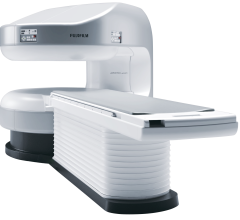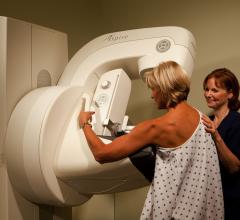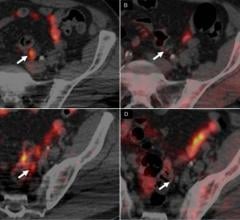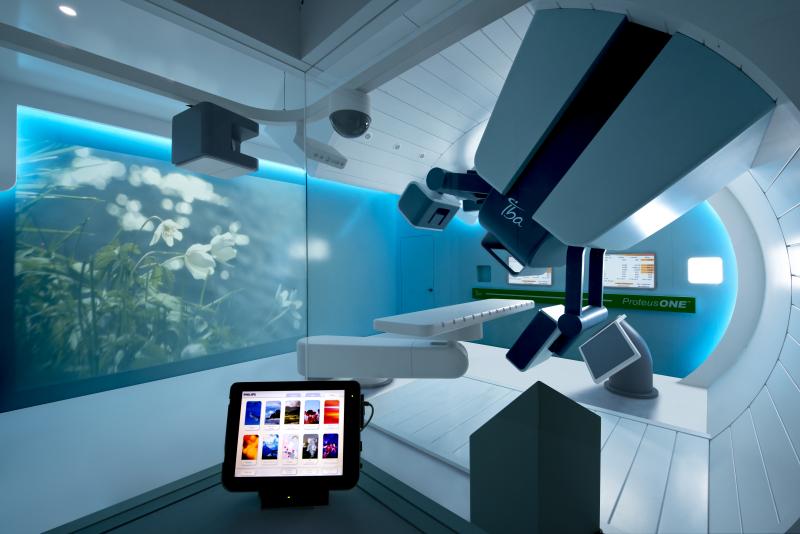Nuance Communications Inc. announced the signing of a multi-year strategic agreement with Partners HealthCare at the 2018 Healthcare Information and Management Systems Society annual meeting (HIMSS18), March 5-9 in Las Vegas. The two organizations will optimize the process for rapid development, validation and utilization of artificial intelligence (AI) for radiologists at the point of care, and Nuance intends to make the new algorithms available through the Nuance AI Marketplace for Diagnostic Imaging. The collaboration will be executed through the recently formed Massachusetts General Hospital (MGH) and Brigham and Women’s Hospital (BWH) Center for Clinical Data Science (CCDS) and will focus on improving radiologists’ efficiency and report quality, as well as patient clinical outcomes.
Scranton Gillette Communications’ Imaging Technology News (ITN) was recently named a 2018 Azbee Award finalist in five Upper Midwest Regional categories and two National categories. The annual Azbee Awards are hosted by the American Society of Business Publication Editors (ASBPE) to recognize editorial and design excellence in the business, trade and specialty press.
March 8, 2018 – Children often find it difficult to remain still for magnetic resonance imaging (MRI) examinations, but ...
Fujifilm’s APERTO Lucent is a 0.4T mid-field, open MRI system addressing today’s capability and image quality needs ...
March 8, 2018 – Vital Images announced that its enterprise analytics solution, Vitrea Intelligence, will be deployed at ...
March 8, 2018 – Fujifilm Medical Systems U.S.A. Inc., a provider of diagnostic imaging products with a comprehensive ...

SPONSORED CONTENT — Fujifilm’s latest CT technology brings exceptional image quality to a compact and user- and patient ...
March 8, 2018 – The current guidelines for mammographic breast cancer screening, which are based on data from primarily ...
SPONSORED CONTENT — Fujifilm’s latest CT technology brings exceptional image quality to a compact and user- and patient ...
March 8, 2018 – Doctors contemplating the best therapy for lung cancer patients may soon be able to predict the efficacy ...
As we get older, it's not uncommon to experience "senior moments," in which we forget where we parked our car or call our children by the wrong names. But currently there are no good ways to determine which memory lapses are normal parts of aging and which may signal the early stages of a severe disorder like Alzheimer's disease. In a study appearing March 7 in the journal Neuron, researchers report that data from high-resolution functional brain imaging can be used to show some of the underlying causes for differences in memory proficiency between older and younger adults.
An Italian study featured in the March issue of The Journal of Nuclear Medicine demonstrates that a novel nuclear ...
SPONSORED CONTENT — EnsightTM 2.0 is the newest version of Enlitic’s data standardization software framework. Ensight is ...
Turning 40 is a benchmark birthday for many women in the United States. While a pessimist might view it as a signal that ...
The global contrast media injectors market is expected to reach $1.4 billion by 2025, growing at a compound annual growth rate (CAGR) of 5.8 percent, according to a new report by Grand View Research, Inc., a research firm based in San Francisco. Rising demand for minimally invasive surgical procedures is a major factor expected to boost the market during the forecast period. These devices assist surgeons in accurate insertion of contrast agents with reduced human errors, thus increasing the accuracy and efficiency of surgical procedures. They play a crucial role in intra-operative computed tomography (iCT), intra-operative magnetic resonance imaging (iMRI) and interventional cardiology. Availability of advanced injector systems for diagnosis and intra-operative imaging has boosted adoption of these systems.
In the world of breast imaging, digital breast tomosynthesis (DBT) is a relative newcomer, only being adopted into clinical practice in the last 8 years. The benefits of DBT, also known as 3-D mammography, are generally understood — improved cancer detection over traditional 2-D mammography due to the ability to scroll through different slices of the breast to see lesions undetectable in two dimensions. While the evidence for DBT has been mounting, new data reveal the technology has seen explosive growth in the last 18 months.
Did you know that approximately one-third of all the data in world is created by the healthcare industry and that ...
Fysicon announced its acquisition by Canon Medical Systems Corporation. Linda Elberse, CEO of Fysicon, stated: "Being part of a major player as Canon Medical Systems Corporation gives us the opportunity to cover all parts of the world with our innovative systems. Now Canon Medical has completed the image by adding Fysicon’s new developed hemodynamic monitoring system “QMAPP”, the sophisticated device management system “DataLinQ” and the cloud based image distribution software “EVOCS" and last but not least Fysicon's knowledge of connectivity and workflow management. Canon Medical is a strong brand name and a leading supplier, which will help us take the next steps into strengthening and growing our footprint in the global market. Furthermore we will keep developing new technologies and exploring new areas in the medical field together with our new parent company. We are very proud to have joined forces!”
Moral ambiguities don’t often come into play in medical imaging. Forget what Dr. House says ad nauseam on the syndicated doctor show. Nobody does exploratory surgery anymore. Seeing inside the body noninvasively is … duh!
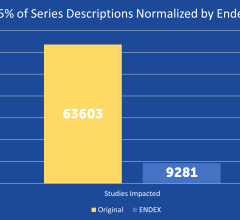
SPONSORED CONTENT — EnsightTM 2.0 is the newest version of Enlitic’s data standardization software framework. Ensight is ...
Technological advances — particularly the adoption of 3-D digital breast tomosynthesis (DBT) — are making it possible for earlier, and more accurate, detection of breast cancer. However, the transition to 3-D mammography is resulting in numerous challenges and concerns. DBT produces hundreds of images, compared to just four images typically associated with conventional 2-D digital mammography. As a result, radiologists find they require significantly more time to review and interpret each exam, reducing the number of patients they can see each day and increasing fatigue, which could potentially lead to missed diagnoses.
Located in a spacious 25,000-square-foot facility on the Presbyterian Hospital of Dallas campus, Southwest Diagnostic Imaging Center is one of the largest freestanding imaging centers in the Dallas-Fort Worth area. Since 1985, the facility has provided thousands of patients from Texas and across the nation with the highest standard of service and a patient-centered approach to care.
As one of the largest Catholic, not-for-profit healthcare systems in the United States, St. Louis-based SSM Health has expanded immensely over the years. So, too, has its ability to apply innovative imaging solutions that meet the needs of it growing patient base. One of the largest integrated delivery systems in the nation, SSM Health serves the comprehensive health needs of communities across the Midwest, with facilities in Illinois, Missouri, Oklahoma and Wisconsin.
Proton therapy has experienced major growth in the last decade, but that growth seems to have slowed slightly in recent months. Market research firm MEDraysintell released a new report in January revising its projection for the number of proton therapy centers worldwide by 2030 down from 1,200 to 900. The company said that more than 50 proton therapy treatment rooms would need to be opened every year from 2018 to 2030 to hit the original projection of 1,200.
The continuing search for advantages to improve workflow has radiology departments constantly searching for new solutions. While some, such as advanced operating systems and computer-aided diagnostics, can require a significant investment in terms of equipment expense or additional training, there is also a simple solution that can help healthcare professionals save steps in the administration of safe and effective care without added complication: prefilled contrast syringes.
Physicians are struggling with too much of a good thing. They have never had so much information about their patients. But the data are scattered across multiple departments and across the enterprise. Finding relevant information can be like finding a needle in a haystack. Enterprise imaging is evolving to address the problem — to find and assemble relevant information so that accurate diagnoses can be made efficiently and effectively.

 March 08, 2018
March 08, 2018 

